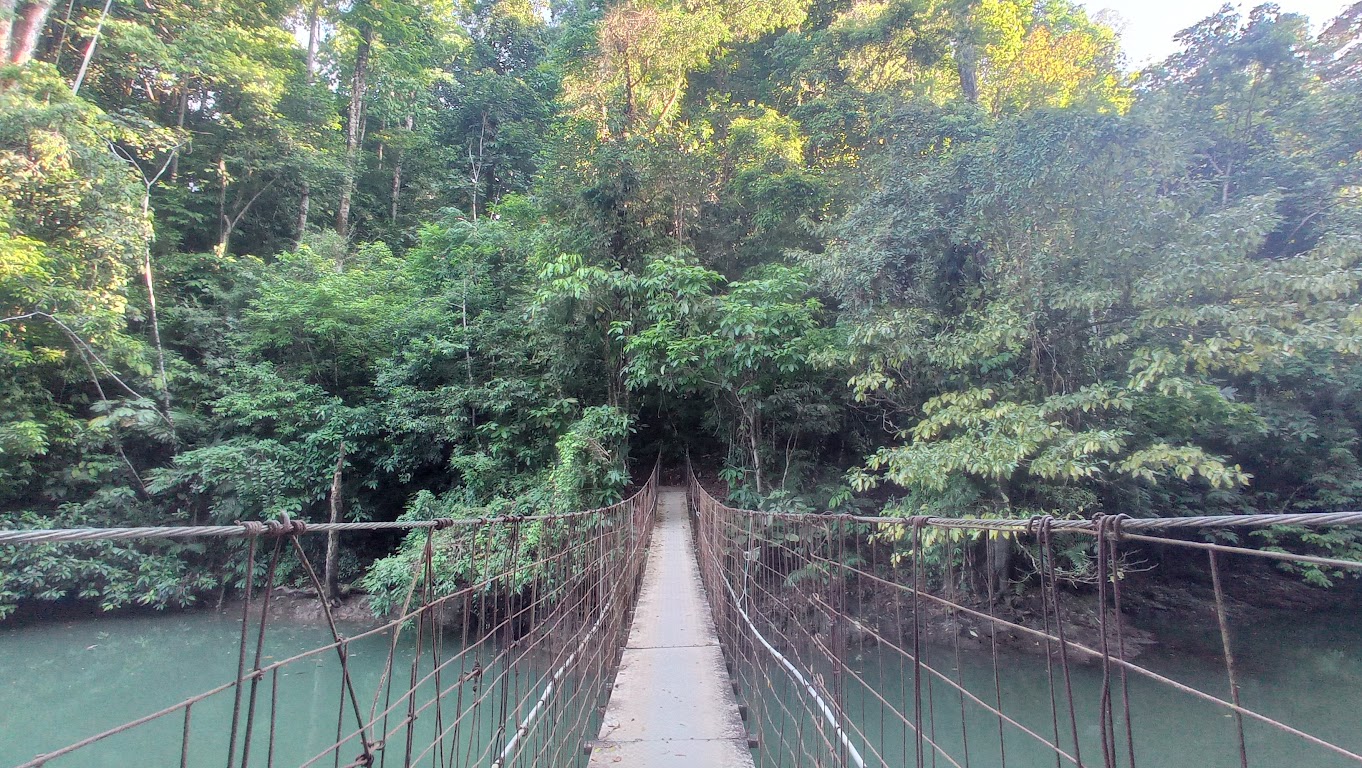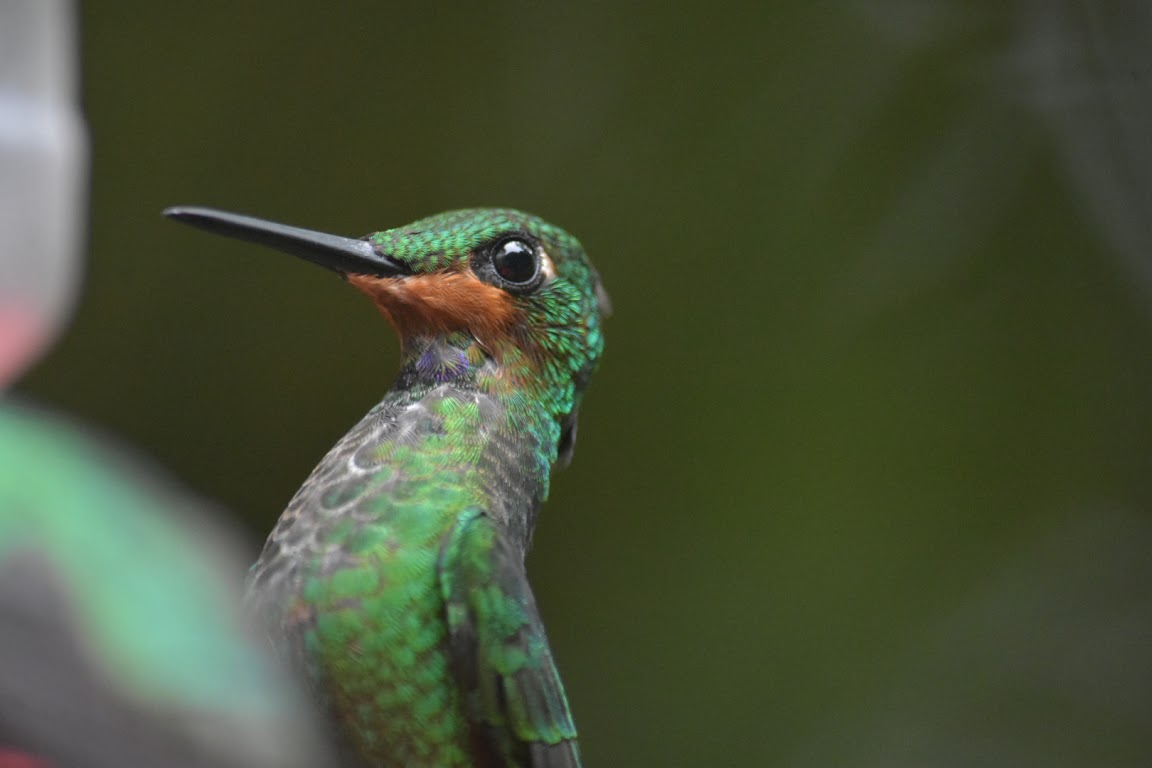
Where to see Costa Rica’s hummingbird species + fun facts
Costa Rica is a stunningly biodiverse country, and its fifty-six species of hummingbird are a prime exhibit A. A delight to observe and photograph with their iridescent plumage, the ample opportunities to watch these energetic birds in action is just one of many things that make Costa Rica a popular destination for wildlife photographers and birdwatchers. Dotted across the country are plenty of sanctuaries and gardens for people looking to spot them, some of which will enable you to capture spectacular photos even if all you have in the way of equipment is your phone.
Common Costa Rican hummingbird species
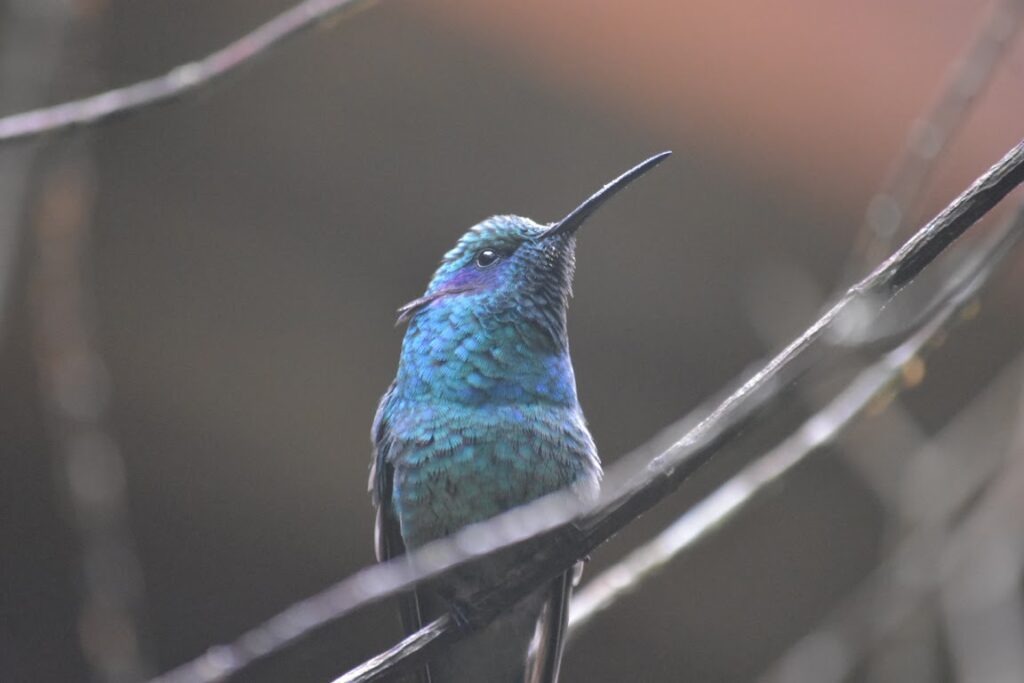 | 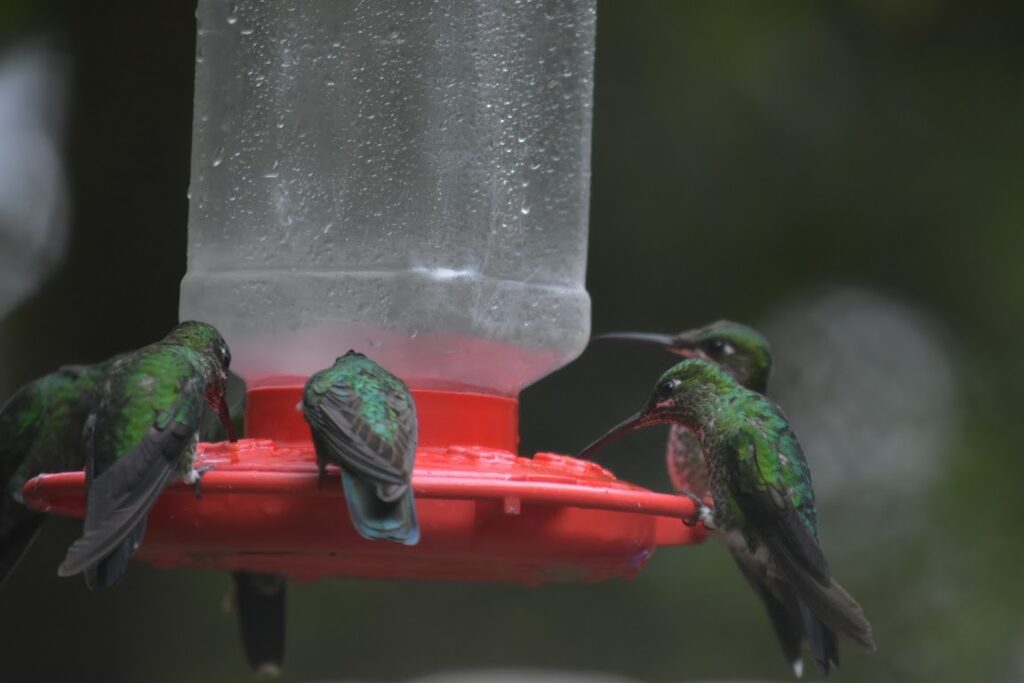 |
| Lesser violetear | Green-crowned brilliant |
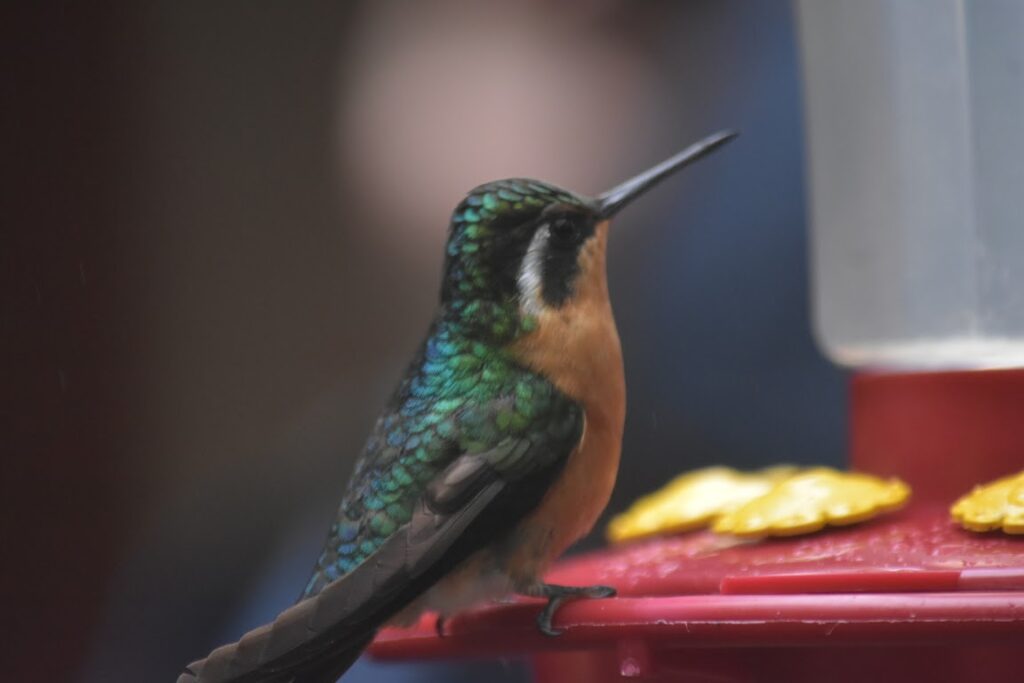 | 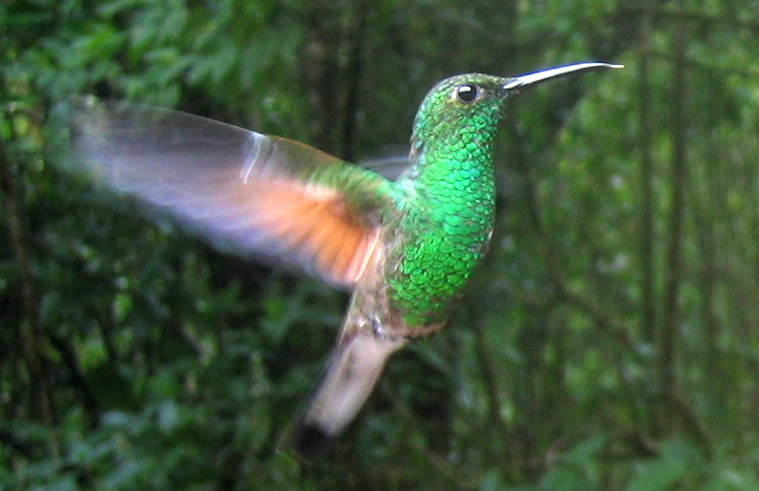 |
| Purple-throated Mountain Gem | Stripe tailed hummingbird |
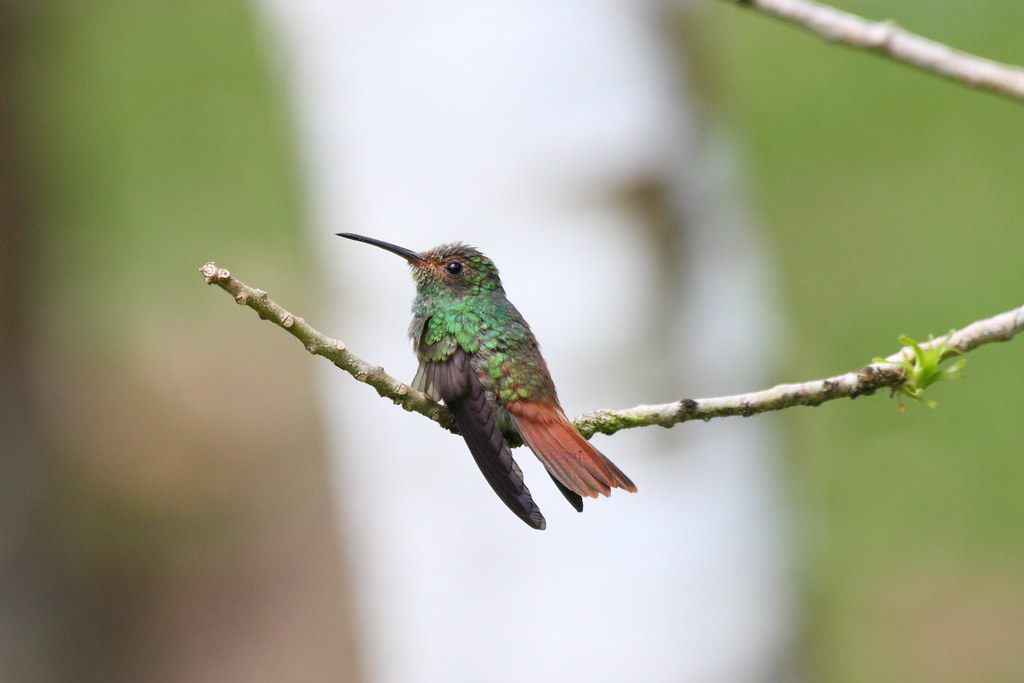 | 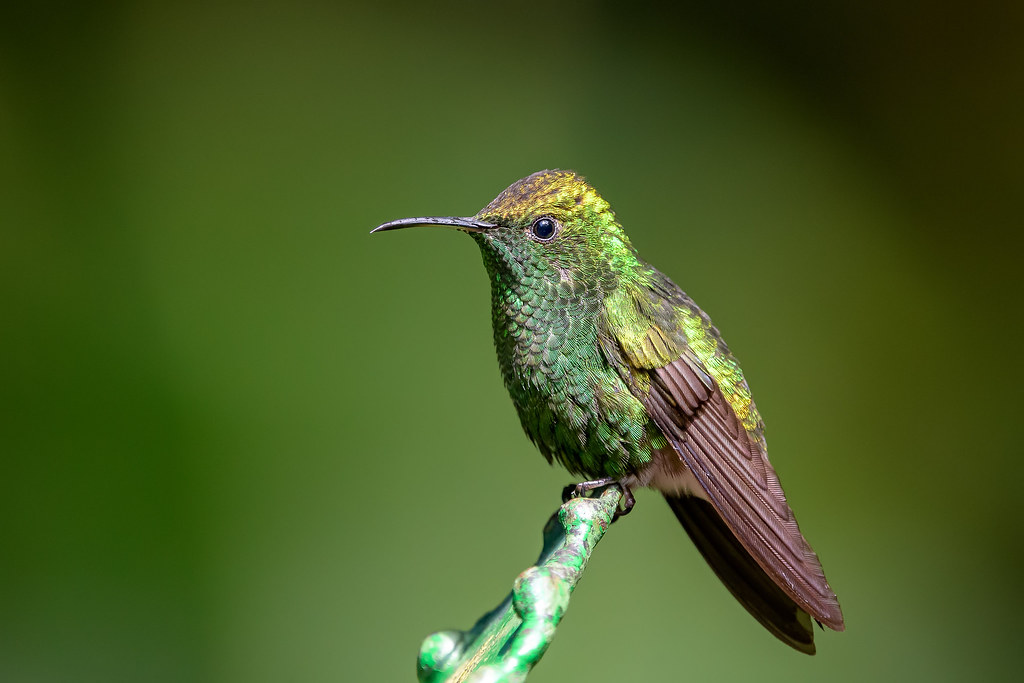 |
| Rufous-tailed hummingbird | Coppery headed emerald |
 | 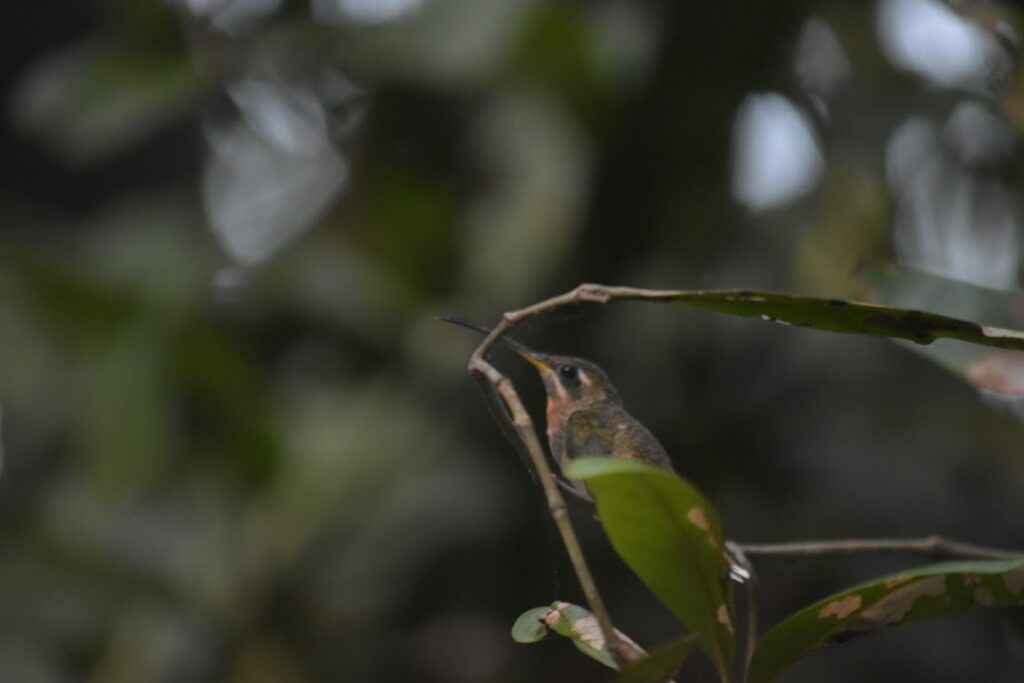 |
| Violet Sabrewing | Stripe-throated hermit |
How to spot Costa Rica’s hummingbirds
While it is perfectly possible to spot hummers flitting through the forest (such is their energy), most sightings won’t last much more than a second and won’t present you with great photography opportunities. A better way to spot them is the “sit and wait” approach: locate a flowerbed or, even better, visit somewhere with hummingbird feeders. In many cases, you won’t have to wait more than a few minutes for them to show up.
There is a slight caveat to this that should be mentioned, though. While researching this article I found that in 2019, Costa Rica banned the feeding of wild animals through feeders, including hummingbirds. It was all pretty confusing to me since I’d just completed my travels through the country and encountered a number of places that left out nectar for hummers and sliced fruits for other birds. I can only conclude that these places managed to get an exception of some sort, since they’re not subtle about it in the slightest (some are well-known tourist attractions) and the Costa Rican police don’t suffer from corruption as much as other Latin American countries. All this to say, the feeders may have come down by the time you get there, which I would personally find a huge shame. If it hasn’t happened now, though, it hopefully shouldn’t for the foreseeable future.
Best hummingbird sanctuaries and gardens in Costa Rica
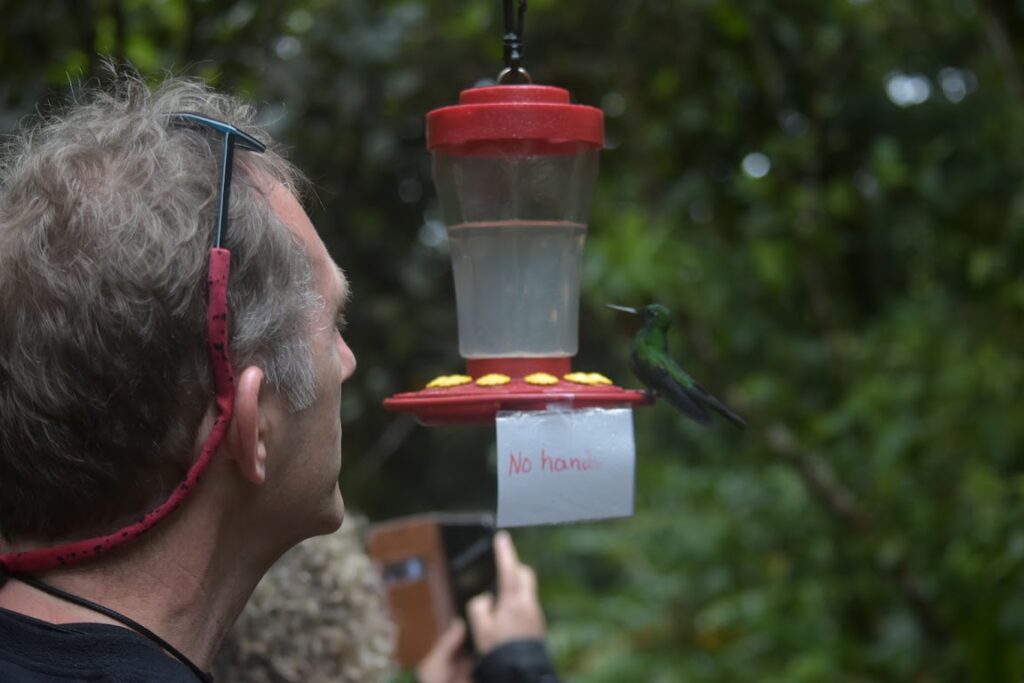
Hummingbirds can be found all over Costa Rica though, practically speaking, you’ll want to be in the highlands to get the best sightings. There are good spots near the tourist towns of La Fortuna and Monteverde, and even a few just outside the capital of San Jose.
Visitors to Monteverde should pay a visit to Cafe Colibri, whose name in Spanish means “Hummingbird Cafe”. Hummingbirds on these feeders are so used to visitors that they will let you get as close to them as the pigeons in a park would. There are over ten species to be seen here, and the feeders are often corralled with birds gorging themselves on nectar. As well as great hummingbird views, the coffee here is excellent and only costs a few pennies more than what a similar roast would cost in nearby, hummingbird-less cafes. Only a few of the tables actually face onto the feeders, so it’s a good idea to get here early if you want a brew with a view. Entry is free, and with plenty of standing room on the terrace, there’s no obligation to buy anything.

La Fortuna didn’t seem to have any feeding stations when I visited, but there are a few spots one can visit where they are present. One good option is the Arenal Oasis Lodge which, at only $5 per person, is probably the cheapest forest reserve you’ll visit in the entire country. Well, technically it’s the lodge’s grounds, but a network of trails running through the forest makes it close enough. The place isn’t huge, but a garden of flowers in the east end plays host to many different hummingbirds. Two speciality species of this area that can be found here include the dashing black-crested coquette and the more drab but still beautiful green-breasted mango.
If you’re driving to La Fortuna from San Jose or simply want an easy day trip from the city, La Paz Waterfall Garden is an excellent place to visit. An hour’s drive away along the highway to La Fortuna, this place has over 26 species flitting around its flowers and feeders. What makes this place even more unique is that you can feed them by hand with prior arrangement!
Fun facts about hummingbirds
-Hummingbirds are tiny. Of the world’s ten smallest bird species, the top four are hummingbirds. The smallest of these, the bee hummingbird, can comfortably perch on the end of a pencil.
-Hummingbirds have huge hearts, representing 2.5% of their bodyweight (by contrast, a human’s is normally 0.45%). Wholesome jokes aside, there’s a good reason for this: pollinating over 2,000 flowers on a typical day, a hummingbird’s heart beats over a thousand times per minute.
-Hummingbirds have the largest brain relative to body size and are able to calculate how much time a flower they’ve already visited needs to replenish its nectar levels.
-Praying mantises have been known to hunt hummingbirds.
-Hummingbirds can fly backwards, upside down, straight up and straight down.
-Mating is the only time hummingbirds are seen together, and as would be expected of such a fast-paced species, the deed only lasts a few seconds. The mother lays a pair of coffee bean-sized eggs, with the male playing no part in rearing them. It’s for a good reason, though – males are more brightly coloured, which could give the nest away to predators. After three weeks, the young are ready to (literally) fly the nest.
Photo credits:
“File:Stripe-tailed Hummingbird (cropped).jpg” by Dirk van der Made (en:user:DirkvdM) is licensed under CC BY-SA 3.0.
“Rufous-tailed Hummingbird (Amazilia tzacatl)” by Dominic Sherony is licensed under CC BY-SA 2.0.
“Coppery-headed Emerald Hummingbird” by Becky Matsubara is licensed under CC BY 2.0.




